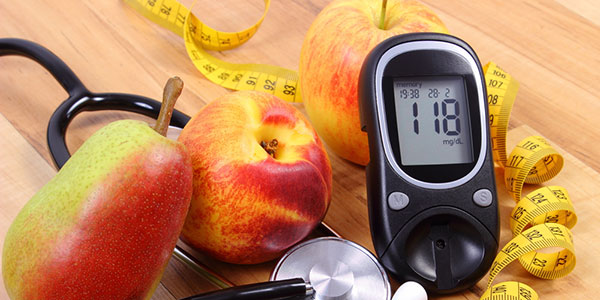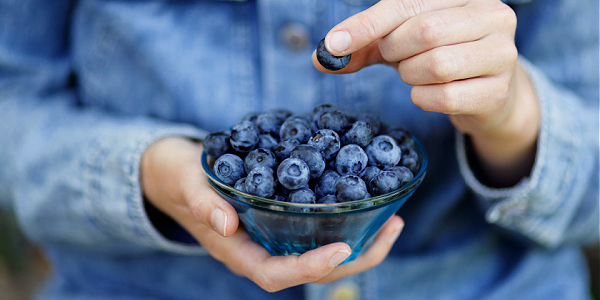
Diabetes Diet
A diabetes diet is essentially a healthy diet. A healthful diet limits or ditches prepackaged, processed foods and embraces a whole foods approach. Though most individuals assume such diets are restrictive, a diabetic or healthy diet is anything but limited in variety. A healthy diet actually encourages food variety, as there is no single food that can provide all the nutrients the body needs. Each food brings its own nutrients to the table and when consumed in variety, the totality can best assist towards great health. So when eating healthy or to control blood sugars, direct the most attention to:
Whole Grains
Choose whole grains and wheat products over refined products. Wheat and related grains contain vitamins, minerals, and fiber that white and processed foods generally lack. Divvy away from desserts and pastries to reduce the risk of blood sugar exaggerated spikes and drops.
Vegetables
Vegetables are broken down into "starchy" and "non-starchy" types. Starchy vegetables are higher in carbohydrates (often 15 grams per serving) while non-starchy vegetables are generally only five grams per serving.
Starchy: sweet and russet potatoes, corn, peas, squash, pumpkin
Non-Starchy: asparagus, broccoli, carrots, cauliflower, peppers, kale, spinach
Fruits
Individuals often think they should be avoided due to their sugar composition. Although fruits do contain sugar, they contain a natural sugar known as fructose. When choosing fruits, go for whole fruits and try to skip out on high intakes of juices. Juices are often concentrated with additional sugars and lack fiber.
Dairy Products
Milk, cheeses, and yogurts contain lactose, a naturally-occurring sugar in dairy products. Dairy products are also excellent sources of calcium and provide ample amounts of protein. Pay attention to the ingredient and nutrition label when choosing dairy products, as some may contain unnecessary, added sugars.
Lean Proteins
Balance out the meal plate with a lean protein. Protein is extremely valuable, as it can keep both blood sugars and hunger at bay. Choose leaner proteins such as chicken, turkey, sirloin, fish and shellfish. Plant-based proteins include beans lentils, and soybeans, just stay mindful of their carb content.
Fats and Oils
Swap out butters and margarines with healthful fats, mostly rich in monounsaturated fatty acids (MUFAs). MUFAs are shown to be heart-protective and bountiful in antioxidants. Olive oil has even been suggested to manage after-meal blood sugar levels!
Diabetes Meal Plan Considerations
Though the food quality and variety is imperative to a healthy diet, a diabetes diet further stresses the importance of meal timing and portions for tighter blood glucose control. Most commonly, a diabetes meal plan includes breakfast, lunch, dinner, and a snack or two. Additionally, meals are advised to contain no more than 60 grams of carbohydrate (four carb exchanges) while snacks should try to stick to 15 grams (one carb exchange). Though carbohydrate is the top instigator of blood sugar levels, pairing carb with protein and fat can further reduce the risk of sugar spikes.
To get a basic idea of a diabetic menu, a sample day is laid out below. A common trend you may notice is the emphasis on not only whole foods, but the indication of portions, serving sizes, and regularity of meals.
Breakfast: 2 scrambled eggs with a slice of whole grain toast and 1 cup of sliced, fresh strawberries
Lunch: chicken salad containing 3-ounces of shredded chicken, a stalk of chopped celery, ¼ cup of grapes, and a dollop or two of plain Greek yogurt - pair with a slice of whole grain toast or carrots and celery
Dinner: 3 ounces of flank steak, one small sweet potato, a half-cup of roasted asparagus, and a small side salad drizzled with olive oil
Snack: 1 medium apple with 2 Tbsp. all-natural peanut butter
If you're interested in a healthy, doctor-approved meal plan, look no further than bistroMD. BistroMD was founded by bariatric physician, Caroline J. Cederquist, to provide delicious, chef-prepared entrees to those seeking weight loss or specialty diet plans, including a Men’s and Women’s Diabetic Program and more. Rest assured that bistroMD’s Diabetic Program will do all of the planning, shopping and cooking for a safe diabetic-friendly meal program, all you have to do is eat and enjoy!







